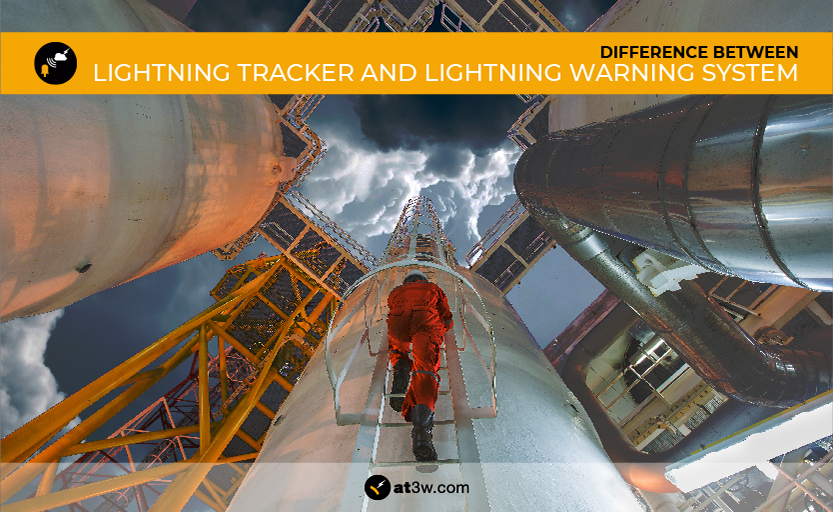Lightning bolts are powerful atmospheric electrical discharges that pose a great danger depending on where they strike. Without proper protection and prevention, these discharges are a risk to people, animals, buildings, and electrical / electronic equipment. In order to prevent the effects of this natural phenomenon, the UNE-EN IEC 62793 standard establishes an application guide to determine the need or not for a thunderstorm detection system, as well as the types of detectors that exist for it.
Lightning types
According to its origin and place of discharge, lightning is classified into:
- Cloud-to-cloud (CC)
- Intra-cloud (IC)
- Cloud-to-air lightning (CA)
- Cloud-to-ground lightning (CG)
What does the UNE-EN IEC 62793 indicate?
The UNE-EN IEC 62793 standard establishes four phases in an electrical storm, from its formation to its dissipation:
- Initial phase: an elevation of the electrostatic field occurs.
- Growth phase: in this phase lightning strikes between clouds or within the same cloud occur (lightning).
- Mature phase: in this phase cloud-to-cloud and cloud-to-ground discharges occur.
- Dissipation phase: in this phase there is a decrease in discharges and the atmospheric electric field.
Based on these storm phases, the standard classifies the different types of detectors that exist according to their detection capacity and also establishes the parameters to evaluate the need for an early warning system regarding risk assessment, in particular:
- Class A detectors – Those that detect thunderstorm during its whole life cycle, from the initial phase to the dissipation phase.
- Class B detectors – These detect discharges between growth and dissipation phases.
- Class C detectors – These detect discharges between storm maturity phase and dissipation phase.
Types of storm detectors: definition and type of measurement used
HSE managers require local and precise information on the formation or approach of a thunderstorm in the area to be protected, for which it will be necessary to use a detector that provides information from the initial phase (elevation of the field ) to the dissipation phase.
Lightning Trackers
Detectors based on monitoring of the electromagnetic field base their system on a sensor that detects the electromagnetic impulses generated by the lightning bolts when they strike the Earth or between clouds.
Key ideas:
Storm detectors with electromagnetic field measurement technology base the lightning risk alarm on the distance from where the discharges are taking place to the area to protect. Therefore, if the first discharge occurs on the area that should be protected, there will be no prior alarm and consequently it will not have been possible to carry out preventive actions.
To determine the end of the risk alarm, these systems work with a countdown that begins with each discharge. If it reaches a certain time limit it is considered to be finished. Therefore, there may be cases in which the preventive action has been taking place for longer than necessary and other cases in which there is risk if a discharge occurs just after the defined time limit.
Lightning Warning System
This type of system evaluates the possibility of lightning bolts taking place based on the electrostatic field of the area to be protected. This monitoring based on its evolution allows detection from the formation to the dissipation of the storm.
Key ideas:
This type of monitoring does not require any prior discharge to provide the warning signs in the event of a thunderstorm. Since it evaluates the value of the local environmental electric field, it provides accurate data so that the technician responsible for operational safety initiates temporary preventive measures before lightning strikes.
The same will happen in order to know when the storm has dissipated. This system allows the local values to be measured, making it capable of determining the absence of danger and therefore, defining the end of the alarm and avoiding unnecessary downtime.
The accumulation of charges within a cloud that generates electric discharges causes an elevation of the local electrostatic field. Therefore, the electrostatic field is a local indicator of the risk of possible lightning strikes. An alarm based on the measurement of the electrostatic field will serve to start and end preventive actions at the right times.
We must remember that any type of detector is a preventive protection tool that will never replace external protection against lightning nor internal protection against surges but complements them.
The international standard UNE-EN IEC 62793 recommends thunderstorm detectors installation for:
- Labour risk prevention.
- Loss prevention in operations and industrial processes.
- Companies operating in open areas such as mining companies, shipyards, energy companies, etc.
- High-risk sectors like oil and gas, chemical or nuclear.
- The continuity of basic services:
- Telecommunications, energy generation, transport and distribution.
- Emergency and health services.
- Civil defence, military equipment, barracks, telecommunications, etc.
- Infrastructure operators such as airports, ports, roads, highways, railways, cableways, etc.
- People responsible for outdoor activities: sports, culture, tourist, etc.
- People in outdoor areas in several fields:
- Jobs, sports or outdoor activities.
- Competitions and massive events.
- Agricultural, farming and fishing activities.
- Public administrations responsible for open areas such as parks, beaches, municipalities, etc.
- Civil and environmental protection.
- Sectors with an intensive use of electronic technology to protect sensitive goods:
- Data processing centers.
- Industry.
- Hospitals.
- Computer systems.
- Electrical or electronic controls.
- Emergency, alarm and security systems.
- Structures with outdoor areas open to the public.
If you want more information, feel free to contact our experts by clicking here. They will carry out a complete study of your location and will provide you with an adapted solution to your specific needs.
You can also sign up for one of the free online webinars offered by Aplicaciones Tecnológicas about lightning detectors by clicking here.
